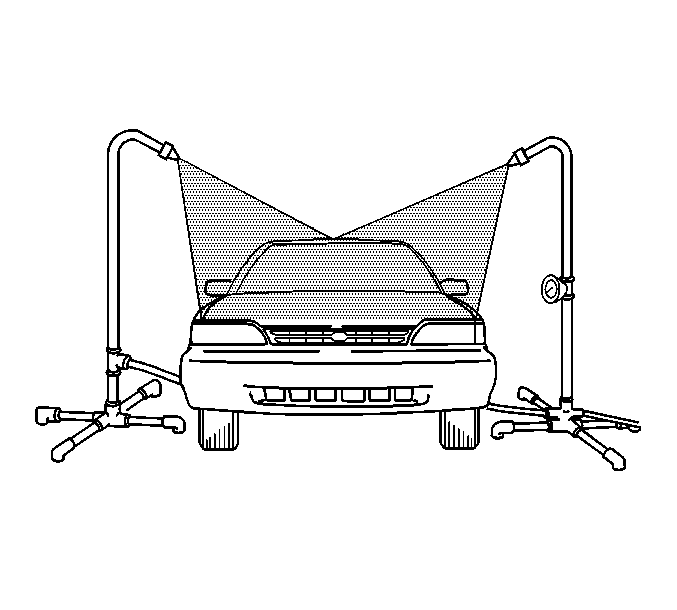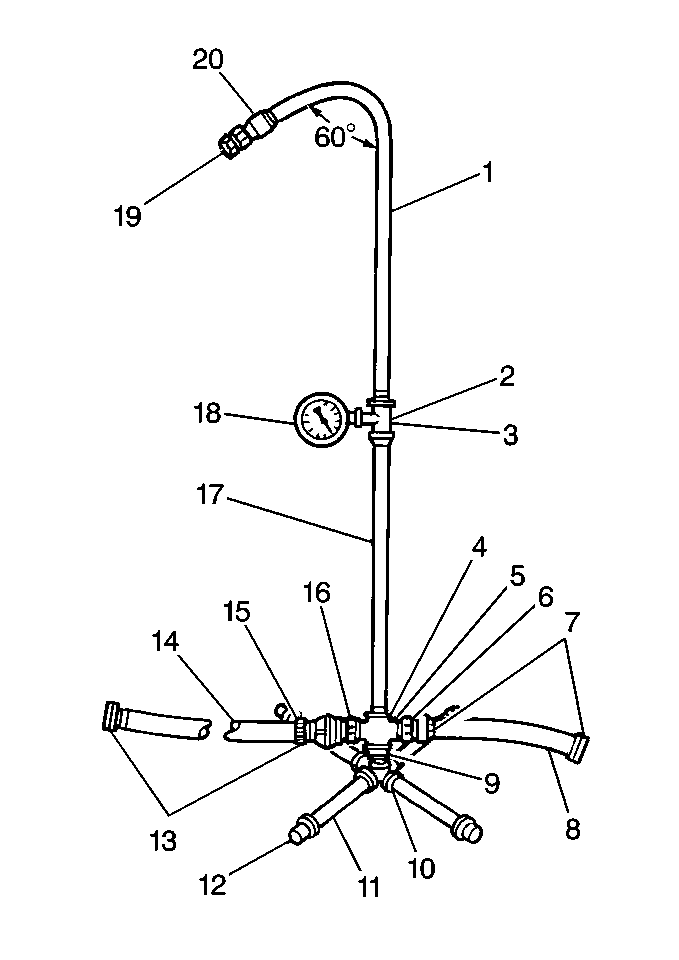Waterleak Diagnosis

Caution: When the vehicle interior has been exposed to extensive water intrusion, such as waterleaks, window left open, driving through high water and so forth, the Sensing and Diagnostic Module (SDM) and the SDM connector may need to be replaced. With the ignition OFF, inspect the area under the front seat and the area around the SDM, including the carpet. If any significant soaking or evidence of significant soaking is detected, the water must be removed, water damage repaired and the SDM and the SDM connector MUST be replaced. Before attempting any of these repairs, the SIR system must be disabled. Refer to the Supplemental Inflatable Restraint (SIR) System for instructions on how to disable the SIR system. Failure to disable the SIR system may result in possible air bag deployment, personal injury or otherwise unneeded SIR system repairs.
Caution: Standard shop practices, particularly eye protection, should be followed during these operations to avoid personal injury.
GM vehicles are designed to operate under normal environmental conditions. The design criteria for sealing materials and components takes into consideration the sealing forces that are required in order to withstand the natural elements. The specifications cannot take into consideration all artificial conditions such as those in some high pressure car washes.
The water test procedure has been correlated to the natural elements. The watertest determines the ability of a vehicle to perform under normal operating conditions.
Repairing waterleaks requires the following actions:
| • | Proper testing |
| • | Proper diagnosis |
| • | Adjustment of the misaligned components |
| • | Application of proven repair materials |
First find the conditions under which the leak occurs.
If the general leak area is found, use a localized test (spot test) such as a water hose or air hose in order to isolate the exact entry point. If the leak source is not obvious, use the generalized testing method using the water test equipment.
Watertest Specifications

The following specifications are necessary in order to watertest a vehicle:
| • | Type of nozzle: A full cone spray with a 60 degree included angle and a full jet spray nozzle No. ½ GG-25, or the equivalent (20). |
| • | Nozzle height: Approximately 166 mm (63 in) from the floor (1). |
| • | Volume of flow: 14 liters (3.7 gal) per minute (7). |
| • | Pressure: 156 kPa (22 psi) measured at the nozzle (20). |
| • | Windshield and front body pillar: Approximately 30 degree down, 45 degree towards the rear and aimed at the corner of the windshield. |
| • | Side: Approximately 30 degree down, 45 degree towards the rear and aimed at the center of the rear door or rear quarter. |
| • | Back window and rear compartment lid: Approximately 30 degree down, 30 degree towards the front and aimed approximately 600 mm (24 in) from the corner of the back window. |
If you are unable to obtain the specified water pressure because of local situations, reposition both stands closer to the body until the water spray overlap is obtained.
The technician may create a one man watertest operation by completing the following steps:
- Set up the watertest stand equipment.
- Back the vehicle away.
- Turn the water on.
- Drive the vehicle under the stands.
Results may take 4 minutes or longer to produce any evidence of leaks.
Waterleak Repair
In order to repair the leak, remove the interior trim panels or the components.
Important: Do not use a high pressure water or air hose in order to test the repaired areas. The fresh repair material may dislodge.
After the completion of any waterleak test, retest the general area using the watertest stand.
